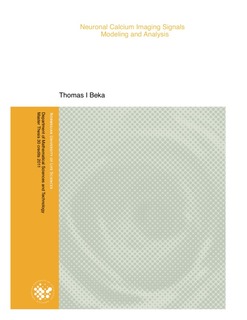| dc.description.abstract | The advent of two-photon calcium imaging in vivo has presented
a new arena to detect neuronal action potentials and identify neuron
types based on their fluorescence signatures. However, despite the
growing popularity, reconstructing spike patterns from the fluorescence
traces still remains a major challenge. Also, not much is usually said
about how the calcium waveforms corresponding to a spike (calcium
kernel) should be estimated. In this thesis, we present a novel approach
for calcium kernel estimation from slopes of a fluorescence trace by
combining the Savitzky-Golay filter with an iterative algorithm for fitting
a nonlinear model (Levenberg-Marquardt). We also present a new
method for spike detection, which employs deconvolution and greedy
optimization. First we test these methods on synthesized calcium signals,
and then we apply them to experimental traces from wild-type
and transgenic mice expressing human α- synuclein (model of Parkinson’s
disease). We show longer calcium response in the somatosensory
cortex neurons of the transgenic mice, read-out both spontaneous and
evoked activities as well as follow the hierarchy in fluorescence transient
elevation arrivals when mice whiskers were stimulated electrically. | en_US |
